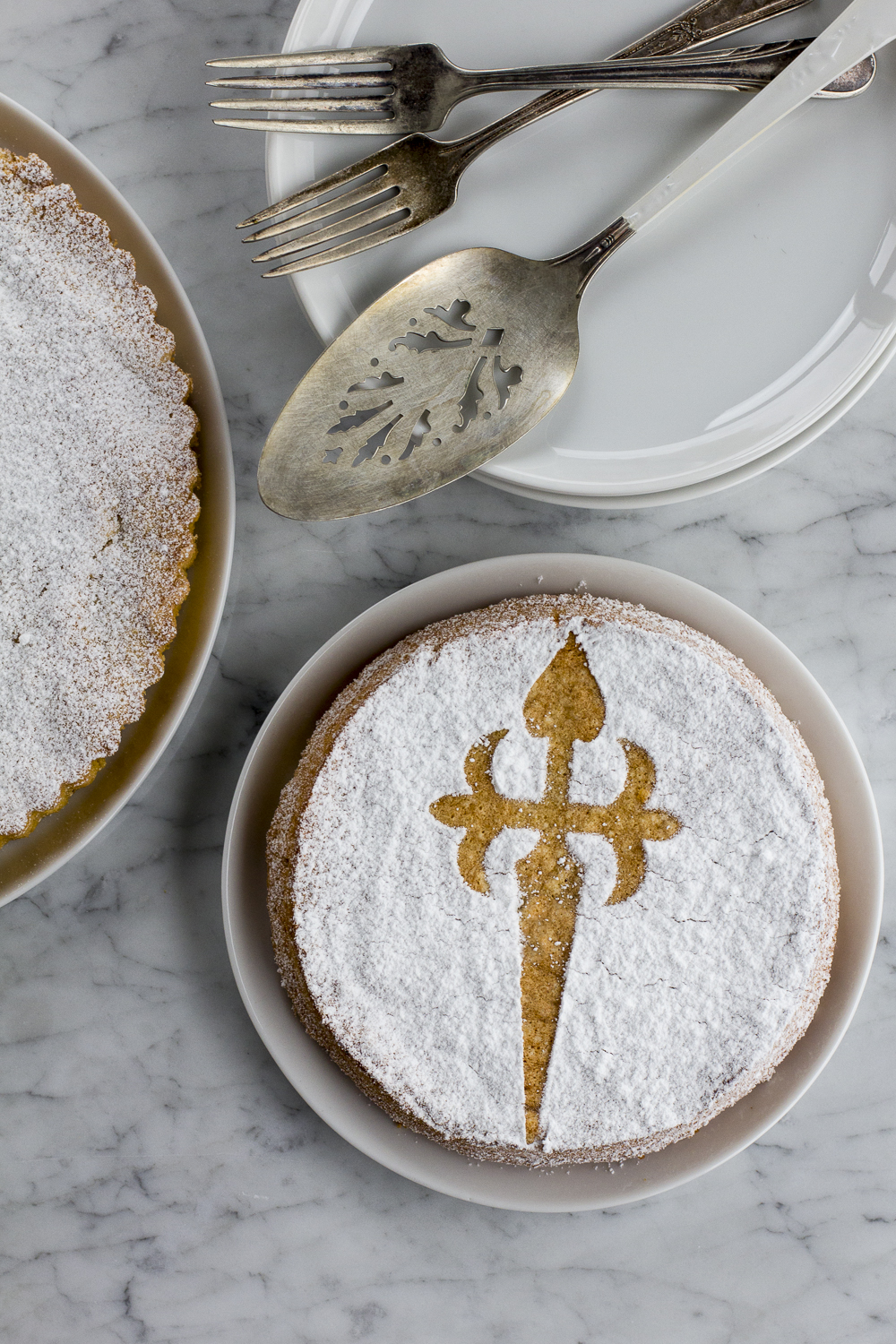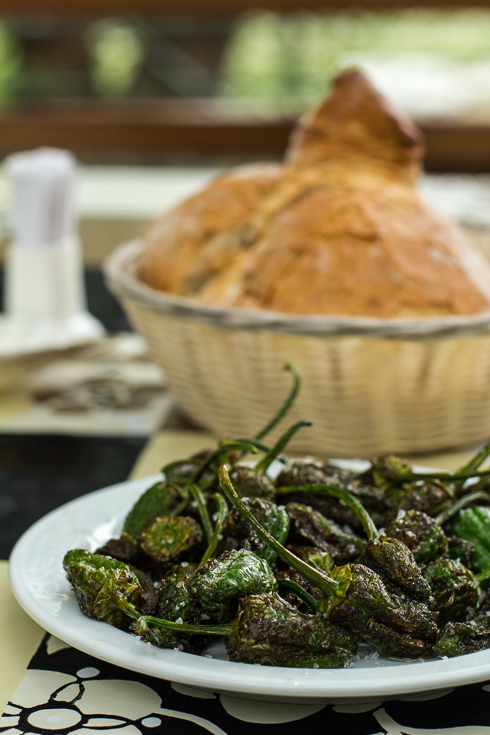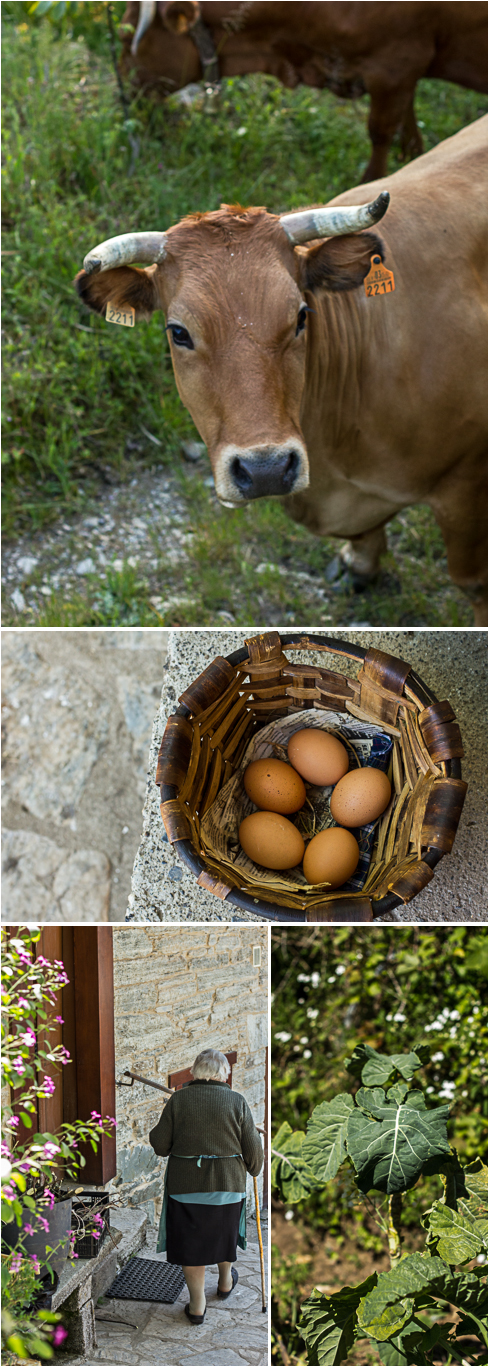Tarta de Santiago
I've said it before. I don't really need an excuse to make a cake but in case you do, here's one. It's the 25th of July which is the Día de Santiago (Feast of St. James), and also Galicia's National Day. It seems like an opportune moment to share this recipe for one of my favourite desserts: Tarta de Santiago.
Every pastry shop you pass in Galicia, is sure to have one in the window, no matter what time of year, the top dusted in confectioners sugar save for the the distinctive cross of Santiago.
In Spanish St. James is called Santiago. Yes I know. It's confusing and I could probably do another post just on the variations of the name James. That's St. James the Great, one of the 12 Apostles of Christ and the patron saint not only of Galicia but also of Spain.
St. James has had a long association with Galicia. Tradition and legend has it that after St. James' death in 44 AD his relics were taken secretly to Galicia where whoever did the taking, seems to have forgotten about them for some time. But in the 9th Century AD, his burial place was rediscovered in what legend says involved a spectacular display of lights in the night sky. On the same site, several chapels and the present day Cathedral of Santiago were built which has since become one of the most important pilgrimage sites in the Christian world, surpassed only by Jerusalem and Rome. Today, hundreds of thousands of pilgrims religious and otherwise make their way to Santiago along the route that bears his name.
But back to the cake, because that's why you are really here. Isn't it?
I'm not sure I remember the first Tarta de Santiago I ever had. I've been eating them for too long. But it almost certainly came out of the ubiquitous blue box, found all over Galicia, of the Tartas Ancano. They are available in every supermarket and gas station in Galicia. On our recent holiday, as we stopped to say goodbye to some neighbours and one of the slim packages was pressed firmly into my hands with the words, "this fits easily in the suitcase". I found this to be quite appropriate as, some say, the recipe for the cake originated with a pilgrim on a his way to Santiago. A travel cake! This makes sense because it keeps well and I would imagine if you found yourself walking for days from France to Spain you'd be pretty happy for a piece of this.
In May 2010, the EU gave Tarta de Santiago Protected Geographic Indication (PGI) status within Europe which allows only cakes made within the Autonomous Community of Galicia and containing at least 33% almonds, to be marketed as Tarta de Santiago meaning that if you were thinking of starting up your own Tarta de Santiago bakery, anywhere other than Galicia, think again.
But fear not, your physical location won't diminish your enjoyment of this cake. If you believe the British newspaper reports, even HRH Prince George had one for his birthday. Even if you are not Galician or Spanish, or aren't lucky enough to have a Spanish nanny, you can still enjoy this one.
With nothing but eggs, sugar, almonds, and a pinch of cinnamon and a zest of lemon, this cake appeals to me based on its pure simplicity. It is filling and satisfying. I love to eat this on its own but topped with some fresh cheese it is truly divine. Some recipes call for a separate crust which is then filled with the cake mixture but I prefer this version - all cake!
I finally bought one of the special cross templates this year in Spain but you can easily substitute a printed piece of paper which is what I did for many years before I had the fancy template. I've made a template for you to use which you can download here.
Tarta de Santiago
250 grams sugar
250 grams ground almonds, preferably Marcona
5 eggs, yolks and whites separated
pinch of cinnamon
zest of one lemon
Grease one ten-inch or two seven-inch springform pans and set aside. Preheat the oven to 320 F/ 160 C. Beat the yolks and sugar together until they are well mixed. Add the almonds to this mixture along with the the cinnamon and lemon zest and mix until the almond is evenly incorporated, being careful not to overmix. Beat the egg whites until they have stiff peaks and then fold this into the yolk/almond mixture. The batter will remain slightly lumpy, but it should be evenly lumpy. Spread the mixture into the cake tin, place on a baking sheet and cook for approximately 40-50 minutes. The top of the cake should be a beautiful golden brown.
Remove the cake from the oven and let cool completely before removing from the pan. To decorate, place the template on the top of the cake and lightly dust with confectioner's sugar. If you decide to use another design, don't worry, it will taste the same. But it won't be a Tarta de Santiago. Enjoy!













































